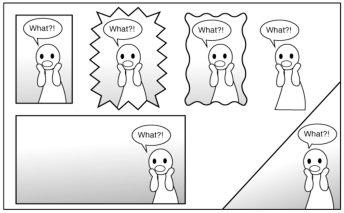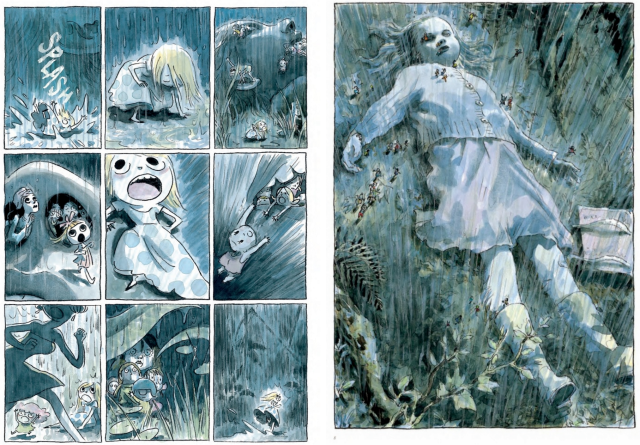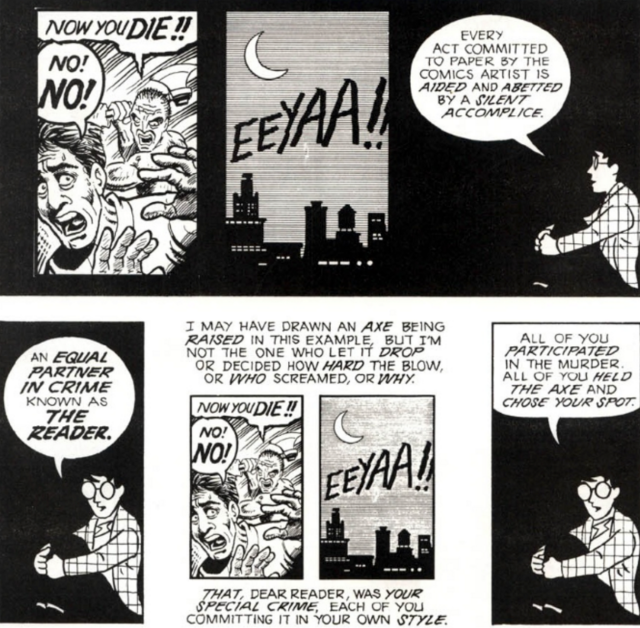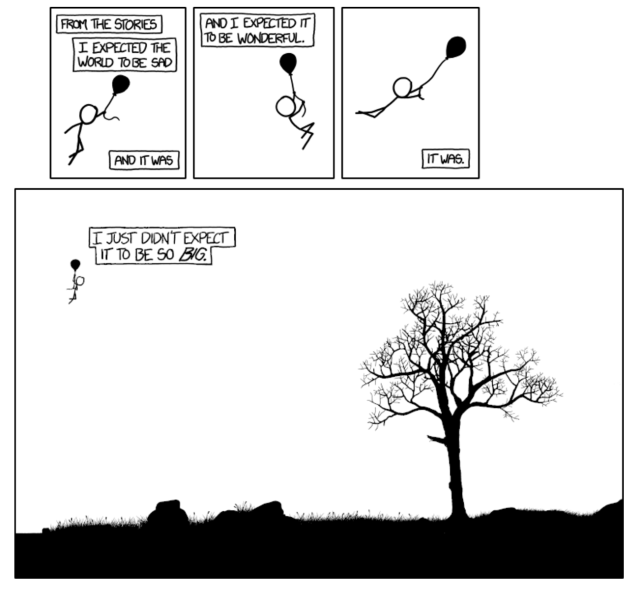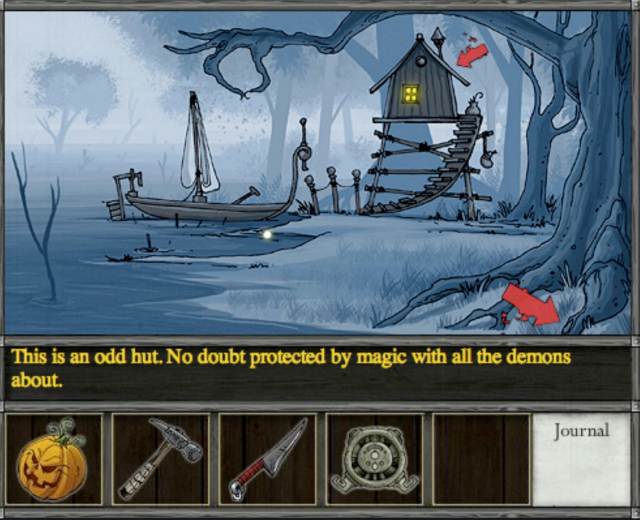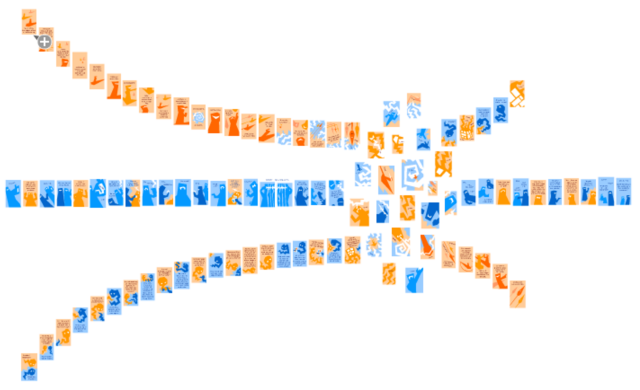–by Matt McGill, Featured Author.
Einz, a two-year-old girl living in Bangkok, Thailand, was diagnosed with a rare form of brain cancer. She did not have much time left to live, but Einz’s parents wanted to give her another chance at life by having her brain removed and cryogenically frozen shortly after her death. Einz’s parents, both medical engineers, have faith in the perseverance of the scientific community: one day, they believe, Einz will be able to live again in a new body.[1] To some people, this story may seem like it is straight out of a science fiction novel; but, how forward-thinking were Einz’s parents? The field of neurobiology is a young but growing one, and so it is filled with a lot of speculation and uncertainty; not only scientists but also filmmakers and game designers create their own storylines about what the future of neurobiology may hold. Einz’s parents have their theory: a future where the information within an intact brain can be used to re-create a human being. A similar, but more specific theory, is presented in the game SOMA: futuristic technologies such as brain scans allow humans to create digital copies of a person’s memory, personality and consciousness that can be uploaded into new robot bodies or virtual worlds. One could imagine that this brain scan technology in SOMA could be used to retrieve the information stored in Einz’s frozen brain and then upload this information into a new medium, allowing Einz to live once again. However, how practical are the technologies presented in SOMA? Could such technology ever become a reality and affect the lives of people such as Einz? The answer is yes.
In order to thoroughly address the practicality of SOMA, let’s first consider what new technologies are presented in the game. SOMA is a sci-fi horror game that follows the protagonist, Simon, who is a brain scan of his former self uploaded onto a robot body. Simon wakes up in an underwater facility called “Pathos-II” approximately one century after his death, only to find out that Earth has become uninhabitable due to an impact with a comet; however, a systems engineer at Pathos-II named Catherine created a project called the “ARK,” where brain scans of people are uploaded onto a virtual world meant to simulate reality. Although Catherine is now deceased, Simon is able to communicate with a brain scan of her that he uploads onto various computers as the two try to find the ARK and launch it into space, where it will be powered by the sun for thousands of years. As is clear from the storyline, two important technologies utilized throughout the game are the brain scans and the ARK. The issue with the brain scans is two-fold: first, how to obtain and copy someone’s brain information, and second, the consequences of uploading a brain scan to a new body. As will be explained later, new research into memory and shows that it is somehow possible to retrieve brain information (relating to memory, personality, and the like); so, as the field of neurobiology grows, the idea of a brain scan comes closer and closer to reality. Also, new computer chip technology shows that artificial intelligence can be advanced to the extent that, when combined with a brain scan containing a person’s brain information, could allow a brain scan to learn and thus adapt to any new body. Finally, the practicality of the ARK is a question of the ability to read and render brain information, which even today is becoming a reality with new research into brain-machine interfaces that translate electrical signals from neurons into movement of prosthetic limbs. Thus, the technologies in SOMA may be less science fiction than they appear.
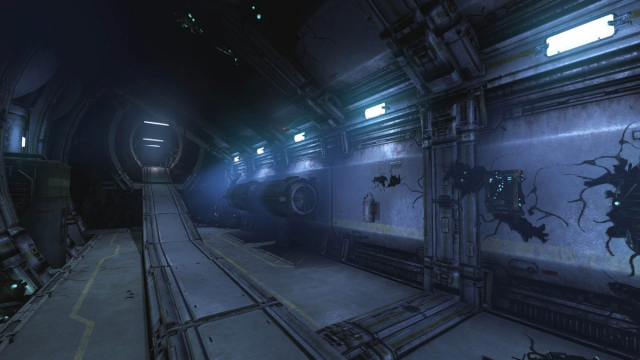
SOMA features an expansive, but largely deserted, underwater research facility.
Let’s begin with the core idea in SOMA: the brain scan. The game explains that a brain scan is where a person’s memories, personality, and consciousness are scanned and stored in digital form, and this scan can be transferred to a new body. It’s important to note that this scan is a copy of the patient’s brain; information is not being transferred, where the scan goes from medium A to B, leaving A empty; instead information is copied and pasted so that the scan again moves from medium A to B and now A and B contain the same information. This point is necessary to highlight since the following discussions on the practicality of brain scans assume there is a copying of information and do not delve into the means by which such brain information could be transferred from a perhaps living medium to a computer or robot. As will be further explained below, a brain scan as a copy is a feasible leap from today’s knowledge, whereas a brain scan as a transfer is not obviously a feasible leap. Let’s consider an example of a brain scan in the game: in order to retrieve the ARK Simon needs a new body that is better equipped for greater depths, and so Catherine tries to convince Simon to undergo another brain scan. At first, the way Catherine explains the brain scans to Simon is a bit cryptic: she explains that, once she makes a copy of a patient’s brain and transfers it to the new body, there is some 50-50 “coin toss” that decides where the patient wakes up, referring to which copy contains the patient’s present awareness. Although not explicitly stated in the game, since Catherine is aware of how such technology works and Simon is being reluctant, we can infer that Catherine is tricking the current form of Simon (Simon A), whom she puts to sleep immediately after the copy (Simon B) is made. Simon B will then wake up only to find Simon A asleep. At the moment the copy is made, both Simon A and Simon B will be the same insofar as they have the same memories and consciousness, meaning that when Simon B wakes up, he’ll emerge with the same experiences as that of Simon A (including being told about the 50-50 coin toss) and so he will believe he won this “coin toss” that put his awareness in the body with the new suit. However, what’s going on is that there are two copies of Simon, two conscious awarenesses that begin the same but quickly diverge from each other as Simon B leaves to help Catherine while Simon A remains asleep, only to awaken distraught that Catherine has left and he is still in the old body; Simon A will believe he has lost the “coin toss.”
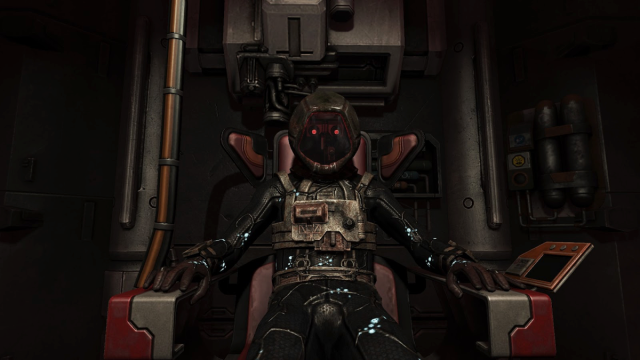
Simon in his first robot body, after the brain scan is complete. The copy of Simon in the new diving suit looks on just before he leaves with Catherine.
There are two important questions at hand in order to determine the practicality of such technology: first the feasibility of a brain scan itself, and second the implications of uploading a scan to a new body. In order to “copy” the information constituting a person’s memories and consciousness, science would need knowledge of the manner in which this information is encoded in the first place. The question of how the brain encodes information has plagued neurobiology ever since the field’s inception. There are many theories of how information is encoded, such as: a rate code theory, where information is simply encoded by the frequency of a neuron’s electrical spikes; a temporal code theory, where information is encoded by the timing of a neuron’s firing with other brain activity such as brain waves; a synchrony code theory, where populations of neurons must fire together in order to successfully project information.[2] Other theories posit that information encoding is an amalgamation of several codes. Although the problem seems impossibly complex, consider the following: you are walking down the street and the smell from a restaurant reminds you of your grandmother’s cooking, and then you start telling your friends about all of the delicious foods you remember and how much you loved the tire swing in your grandparent’s backyard and so on. The mere fact that we can conjure up these memories so effortlessly shows that there exists some way to access these memories. The previous theory of memory analogized memory to an art galley: in an art gallery, you can see paintings but never touch them; like the paintings, this theory held that memories are static and unchanged upon your recalling of them. However, recent research shows that memory acts more like a filing cabinet: there are defined processes of accessing memories (opening the file), using and adapting the information for future use (reading and writing on the file), and re-storing that memory (putting the file back in the cabinet); in this theory memories can be altered once they are recalled and can even be forgotten if they are not filed correctly, unlike the paintings in an art gallery. Research on these processes is just beginning and new discoveries are constantly being made. For example, a 2006 study showed that when a rat is awake, it replays positional information in its brain in reverse.[3] Specifically, there are neurons in the brain called “place cells,” which signal in response to you standing in a particular spot in a given space. Let’s say the rat was trying to find food one day, and walked through areas 1, 2, and 3, each signaled by a different place cell, in order to find the food; then, while the rat is eating the food, these place cells fire in the sequence “3, 2, 1” as if the rat is trying to remember how to return home. As shown through these place cells, this memory information about the places we’ve been can become available to us if we know the right places to look. Other research has found that humans possess “familiarity” and “novelty” detectors that allow us to recognize whether or not we have previously seen a stimulus.[4] It’s clear that the knowledge base is growing and the potential of being able to access someone’s memories and everything else that makes up who they are is becoming real. The futuristic brain scans in SOMA may be less fictional than they appear.
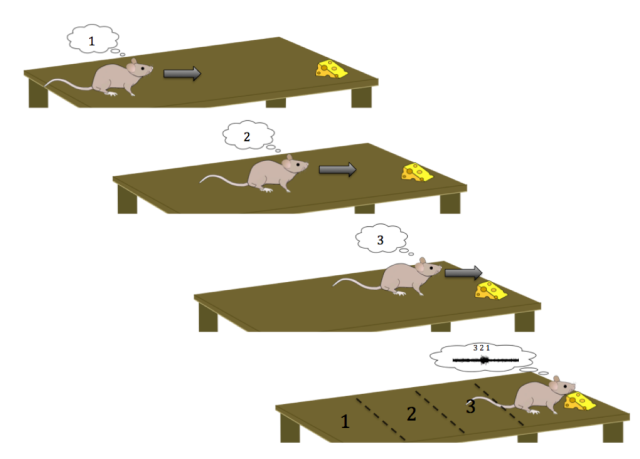
Here, place cells in the rat’s hippocampus fire in response to it being in areas 1, 2, and 3 as the rat moves. While eating, the place cells signal in the reverse order to which the rat first traversed these areas. This phenomenon is known as ‘reverse replay’.
As mentioned previously, another issue determining whether the technology in SOMA can be reality is whether a brain scan could be uploaded to an entirely new body and still be able to function properly, as in SOMA we see Simon running around in several different bodies almost as if he were still his human self. First, there is an inherent connection between the brain and the body, as a person’s brain is optimized for their body and the way this body interacts with the world (such as pain tolerance, limb length, hand size, physical fitness, etc.); uploading a brain onto a body that doesn’t match the original individual could be disastrous, but again in SOMA Simon has little problem adjusting to the new bodies that his brain scan is uploaded onto. Second, humans are learning and adapting beings, and so one problem is that a simple brain scan may not be enough to simulate human functionalities and may simply act as a personality stuck in time. The brain consists of billions of neurons with countless different connections, and the ability to learn and adapt arises from structural changes both in the neurons themselves and the connections between them, such as connection between two neurons, called a synapse, becoming larger and filled with more receptors on the receiving neuron’s side. The idea is known as ‘neural plasticity’, which is the capacity of the brain to adapt to new conditions through changing the connections or strength of connections between neurons. If we were to copy the information in the brain, we would not be copying the ability or potential of these neurons to change, since this is a constantly shifting phenomenon resulting from chemicals and other signals changing within the brain itself. However, this issue of the inability to “copy plasticity” could seemingly be solved through complex artificial intelligence, which, when meshed with a chip containing a brain scan, could allow a brain copy to learn and adapt; this would both allow Simon to continue learning and forming memories, which is exactly what he does in SOMA as he helps Catherine, as well as enable him to adjust to his new body. New technology today includes the TrueNorth IBM cognitive computing chips, which are inspired by the workings of the brain. The chip is said to contain one million “neurons” with over 256 million “connections” that can dynamically integrate information spatially and temporally and generate an output.[5] The system is based on the “integrate and fire” idea of neurons, where a neuron with a set threshold integrates many signals and will fire if and only if the sum of the signals passes said threshold. Technology such as this makes the possibility of artificial intelligence with the efficiency and functionalities of the brain much more tangible, thus rendering the reality of SOMA again strikingly reasonable. However, it’s important to note the limitations of said technology thus far. Although achieving a model that imitates the “integrate and fire” ideas of the brain is astounding, this model is primitive in its understanding of the brain. Neurons are connected to each other through axons, which project a signal, and dendrites, which accept a signal. These protrusions have their own electrical and molecular properties that can change how a neuron integrates information, and even the geometry of a neuron’s axons and dendrites can change the way the neuron functions and behaves. The good news is that more and more research is beginning to uncover exactly how this information processing works, and so one could imagine it being incorporated into technology such as new-age computer chips.

Here is an example of the nuances of neural signaling. In the above image, surrounding neurons make connections called synapses on a single neuron at locations A and B. At these synapses, electrical signals in the presynaptic neuron can result in electrical signals in the postsynaptic neuron (through chemical intermediates). The graph in the below image shows the electrical signals measured in the neuron above when A fires alone, when B fires alone, and when A and B fire simultaneously. One might expect that when A and B fire together, the electrical signal measured should be the arithmetic sum of the individual electrical signals. However, they actually result in what is called a ‘suprathreshold signal’ (labeled in the diagram as “A and B together”).
Finally, with this brain scan technology, Catherine is aiming to create the ARK, which is a virtual world onto which one can upload people’s brain scans so that these individuals can continue on living in this virtual reality. I will not delve into the methodology of creating a virtual world, but I will specifically address what it means to read and render brain information. Consider the brain-machine interface, which is a direct communication pathway between a person’s neural signals and some device. This is a growing technology used for amputee patients. Specifically, one current methodology being tested places electrodes into the muscles responsible for moving the joints and body parts in the lost limb (such as placing electrodes in the pectoral muscle and in muscles on the shoulder for those who have lost an arm). These electrodes are able to pick up thought-generated nerve impulses that would normally go to the now-absent limbs, and instead transmit this information to the prosthesis, thereby controlling the movements of the arm.[6] With simple knowledge of anatomy and neural signaling, we can create a bionic man. Along a similar mindset, with more knowledge of how information is stored and processed in the brain, the stage is set for technology that can read and even control someone’s mind. And some of this work has already been successful: brain implants exist that read electrical information and transfer it to a computer for decoding; this computer is then connected to a sleeve of electrodes around a patient’s arm, allowing for control of the patient’s limbs from her brain without passage through her spinal cord.[7] With more knowledge into how memories and other information is stored, it seems plausible that one could read and utilize someone’s memories and personality, perhaps by uploading said information onto a computer program where avatars are driven by the brain scan information to go about and interact with a virtual world. The possibilities of such a future are not science fiction.
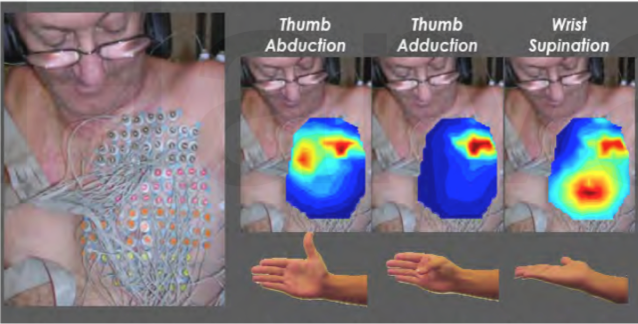
On the left are the electrodes on the patient’s pectoral muscle. The right panels depict the pattern of neural activity (where red is high activity) corresponding to certain muscle movements.
With new technologies, ethical questions may arise concerning how to conduct our behavior with such advanced capabilities, and such questions arise within SOMA. First, how should you behave if more than one copy of yourself exists? When Catherine asks Simon to copy himself so they can utilize the stronger diving suit, Simon is given the choice of whether or not to keep the other copy of himself alive. At one moment in time these two copies were exactly the same, but as time continues these copies will experience the world in different ways and thus diverge, becoming different beings. Would allow another version of yourself to exist in some capacity, or would you choose to deactivate this second version? This question is left for the player to decide, among other choices in the game. Another dilemma in SOMA concerns the end goal of the game itself: with technology such as the ARK, is uploading human beings a worthwhile cause in order to preserve what is left from humanity? The ARK is only able to run off of solar power for a finite period of time, and so at some point the ARK too will shut off, taking the last of humanity with it. Also, the virtual world of the ARK is a simulation of a deciduous forest with a park; the ARK is far less expansive than the world we now live in with a far smaller and likely less diverse population. With all of this in mind, is the ARK a depressing solution that aims at delaying the inevitable end of humanity through creation of an inferior world for ourselves? The game not only leaves several opportunities for the player to ponder the ARK as a goal, but also presents other perspectives on the ARK through the stories of past Pathos-II employees. As Simon explores Pathos-II, he hears news of people brain-scanned for the ARK who then killed themselves so that no copy of them had to remain on Earth; they perhaps saw the ARK as another opportunity to live, but this suicidal action is more nuanced. These brain scans are not transfers, and so it is not obvious what good suicide accomplishes here; one copy of these employees exists on the ARK while the other is still on Earth, and so killing their body on Earth is just like any other act of suicide. The version of these employees on Earth will never know what their corresponding version on the ARK is experiencing.
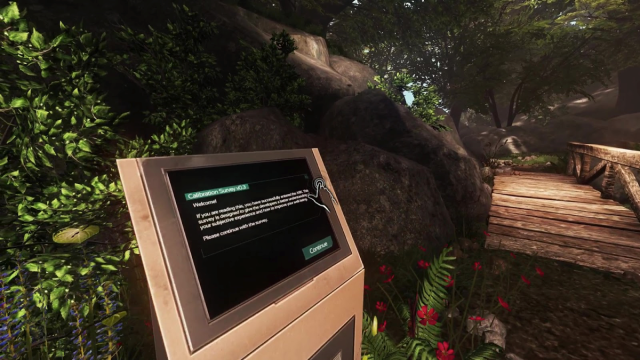
In the epilogue, Simon finds himself in the ARK, and a kiosk asks him whether he wants to continue living in the ARK or would rather deactivate himself.
Overall, these issues can prompt different responses from different people, and such responses may affect how you play and experience SOMA. However, one thing is for sure: this science fiction game is not as fictional as it appears; Einz may be able to live again soon.
Matt McGill is a featured author at With a Terrible Fate. Check out his bio to learn more.
[1] “Frozen Child: The Youngest Person to Be Cryogenically Preserved – BBC News.” BBC News. N.p., 15 Oct. 2015. Web. 12 Dec. 2015.
[2] Stanley, Garrett B. “Reading and Writing the Neural Code.” Nature Neuroscience Nat Neurosci 16.3 (2013): 259-63. Web.
[3] Foster, David J., and Matthew A. Wilson. “Reverse Replay of Behavioural Sequences in Hippocampal Place Cells during the Awake State.” Nature 440.7084 (2006): 680-83. Web.
[4] Rutishauser, Ueli, Adam N. Mamelak, and Erin M. Schuman. “Single-Trial Learning of Novel Stimuli by Individual Neurons of the Human Hippocampus-Amygdala Complex.” Neuron 49.6 (2006): 805-13. Web.
[5] Modha, Dharmendra S. ” Introducing a Brain-inspired Computer.” IBM Research: Brain-inspired Chip. N.p., n.d. Web. 15 Jan. 2016.
[6] “Introducing Jesse Sullivan, the World’s First ‘Bionic Man.'” Jesse Sullivan, First “Bionic Man” Rehabilitation Institute of Chicago, n.d. Web. 15 Jan. 2016.
[7] Hochberg LR et al. Neuronal ensemble control of prosthetic devices by a human with tetraplegia. Nature. 2006. 442: 164-171.



